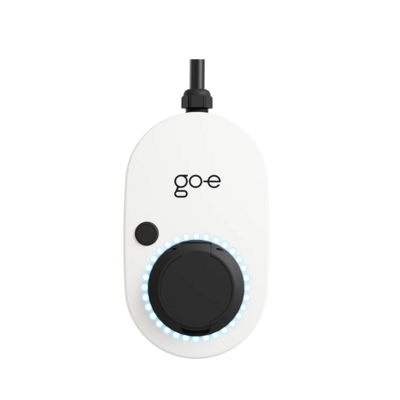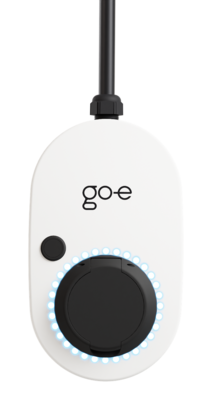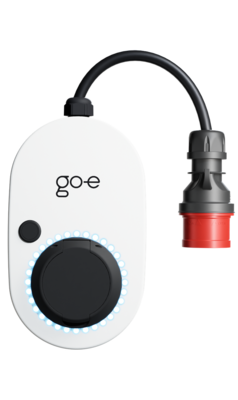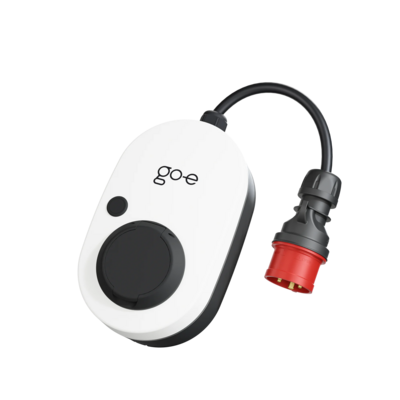Wallbox 11 kW or 22 kW: Which One Should You Buy for Your Home?
Last updated:
You want to install a wallbox at home, but you're not sure whether you should buy a wallbox with 11 kW or 22 kW charging power?
Then you've come to the right place!
In this article, we will explain the difference and help you make the right decision.
So, let's get started!
Do you want to allow Integration of youtube videos?
Allows the playback of videos, that are hosted on youtube.com. By allowing this feature, you accept the privacy agreement of google.
In this article, we will show you the eight main differences so that you can then decide which wallbox is right for you.
Difference #1: Higher charging power of the 22 kW Wallbox
You can usually choose between two basic models of a wallbox:
- 11 kW Wallbox: this Wallbox has a maximum charging capacity of 11 kWh.
- 22 kW Wallbox: this wallbox has a maximum charging capacity of 22 kWh.
Difference #2: The Charging Time of an 11 kW vs 22 kW Wallbox
Theoretically, a 22 kW wallbox could charge half as fast as an 11 kW wallbox.
Note, however, that there are factors that influence the charging time. The charging power of the electric car and the charging cable are two of them.
Charging time depends on the electric car
If your EV has a three-phase on-board charger and a maximum charging power of 11 kW, this means that you can’t charge faster even with a 22 kW wallbox. Let's take a quick look at the Tesla Model 3.
Tesla Model 3 characteristics:
- Battery size: 62 kWh
- Max. AC charging power basic version: 11 kW
- Number of phases: three-phase
- Max. AC charging station charging current: 16 A
| Wallbox 11 kW | Wallbox 22 kW | ||
|---|---|---|---|
| Ladezeit | Max. kW | Charging Time | Max. kW |
| 6.12 hours | 11 kW | 6.12 hours | 11 kW |
Charging time depends on the charging cable
As already mentioned, not only the characteristics of the electric car influence the charging time, but also, for example, the charging cable.
For instance, if you have an electric car with 22 kW AC charging power and a wallbox with 22 kW charging power, but a charging cable that only allows 11 kW charging power, your electric car will only charge at 11 kW. 🤯
Difference #3: The Required Connection Power
Before deciding on one of the wallboxes, you should check how high the connection power is available for the charging station in your house. If it is too low, there is no point in installing a 22 kW wallbox as it requires 32 amps at maximum charging power. Of course, you can also charge with a 22 kW wall-mounted charging station at a lower output.
☝️ So don't forget to check the maximum charging capacity of your EV and the connected load of the house before buying a wallbox.
Difference #4: A 22 kW Wallbox is Downward Compatible
A benefit of a 22 kW wallbox is that you can charge at 22 kW, but you don't necessarily have to. The charging station can also charge with a charging power of 11 kW if, for example, your EV or the electrical installation of your house does not allow more.
With an 11 kW wallbox, you are bound to the maximum charging power of 11 kW.
Difference #5: An 11 kW Wallbox is Slightly More Gentle on the Battery
Even though charging is faster with a 22 kW wallbox, an 11 kW wallbox is somewhat kinder on the battery. However, the difference is hardly noticeable.
There are only clear differences between AC and DC charging stations, i.e. fast charging stations, as the charging power is higher with DC charging stations.
Difference #6: A 22 kW Wallbox is Subject to Approval in some Countries
A significant difference between a wallbox with 11 kW and a wallbox with 22 kW, depending on the country in which the charging station is installed, can be the obligation to register and obtain approval.
In Germany, for example, you only have to notify the network operator about installing a wallbox with 11 kW, whereas a wallbox with 22 kW not only has to be reported, but also approved before it can be put into operation (as of August 2022).
If a 22 kW wallbox is not approved, for example, because the connected load of the house is too low and you may be required to increase the connected load at your own expense, you should consider buying an 11 kW wallbox.
| Germany | Wallbox 11 kW | Wallbox 22 kW |
|---|---|---|
| Notification | yes | yes |
| Approval | no | yes |
In Austria, for instance, a stationary wallbox must be registered at the electricity network operator by the electrician regardless of the connected load, while no registration is required for a mobile charging station (also called a smart charging cable) (as of August 2022).
According to the Federal Ministry for Climate Action, Environment, Energy, Mobility, Innovation and Technology, there are different requirements depending on the federal state as to whether charging infrastructure is subject to approval, subject to notification or exempt from approval.
Important: Check the legal classification, because there can be differences depending on the wallbox and the country.
Difference #7: An 11 kW Wallbox is Cheaper
In terms of price, the two charging stations are very close to each other. However, there is a minimal difference between the 11 kW and 22 kW wallboxes.
For instance, the go-e Charger Gemini 11 kW costs EUR 749 (RRP), whereas the go-e Charger Gemini 22 kW costs EUR 759 (RRP). The 11 kW wallbox is therefore EUR 10 cheaper. 😋
Difference #8: Eligibility of the Wallboxes
In Germany and Austria, for example, both wallboxes are eligible (as of August 2022). But for other countries, it's not always the case.
| Wallbox 11 kW | Wallbox 22 kW |
|---|---|
| Eligible in Austria for private individuals in single-, two- and multi-family homes and for businesses (as a charging station not accessible to the public) via Kommunalkredit Public Consulting GmbH. | Eligible in Austria for private individuals in single-, two- and multi-family homes and for businesses (as a charging station not accessible to the public) via Kommunalkredit Public Consulting GmbH. |
| Eligible in Germany for companies and municipalities under the KfW programmes Grant 441 and Grant 439. | Eligible in Germany for companies and municipalities under the KfW programmes Grant 441 and Grant 439. |
| Eligible in Germany for private individuals via KfW grant 440 (currently no new applications possible). | - |
However, the eligibility of wallboxes depends on the country in which you want to install the wallbox. Only a few countries offer subsidies for mobile charging stations, e.g. Austria.
Important: There are differences in the eligibility of wallboxes depending on the country. So check the respective regulations.
22 kW or 11 kW Wallbox: Who needs Which?
Summary
- For most private EV owners, 11 kW wallboxes are sufficient. The reason for this is that most EV owners charge their cars overnight or during the day when they are at work. In this case, you have enough time to fully charge your electric car. If you still want to buy a 22 kW wallbox to charge faster, you have to make sure that the conditions for this are met (e.g. connection power, charging power of the e-car, etc.). If the conditions are not met, you will not be able to charge faster with a 22 kW wallbox.
- For entrepreneurs or employees who own a business electric car, a 22 kW wallbox makes perfect sense, as you or your employees may need to charge the car quickly at the work location or on the way to a business appointment. The charging time can be reduced by half with a 22 kW. However, it is important that the above-mentioned requirements (e.g. connection power, charging power of the e-car, etc.) are met. If the conditions are not met, you cannot charge faster with a 22 kW wallbox.
go-e Charger Gemini 11 kW

The compact wallbox for stationary use, at home or at the workplace. Simple installation, intuitive operation and smart comfort functions. Charging power from 1.4 kW to 11 kW. 1-phase or 3-phase charging.
go-e Charger Gemini 22 kW

The compact wallbox for stationary use, at home or at the workplace. Simple installation, intuitive operation and smart comfort functions. Charging power from 1.4 kW to 22 kW. 1-phase or 3-phase charging.
go-e Charger Gemini flex 11 kW

The intelligent wallbox can be used both stationary in the wall bracket and mobile. No electrician is required for the installation of the charging station. Charging power from 1.4 kW to 11 kW. 1-phase or 3-phase charging.
go-e Charger Gemini flex 22 kW

The intelligent wallbox can be used both stationary in the wall bracket and mobile. No electrician is required for the installation of the charging station. Charging power from 1.4 kW to 22 kW. 1-phase or 3-phase charging.
More on the topic
If you want to know more about charging stations, charging electric cars and charging accessories, then subscribe to our YouTube channel. There are exciting videos on the topic every month.
